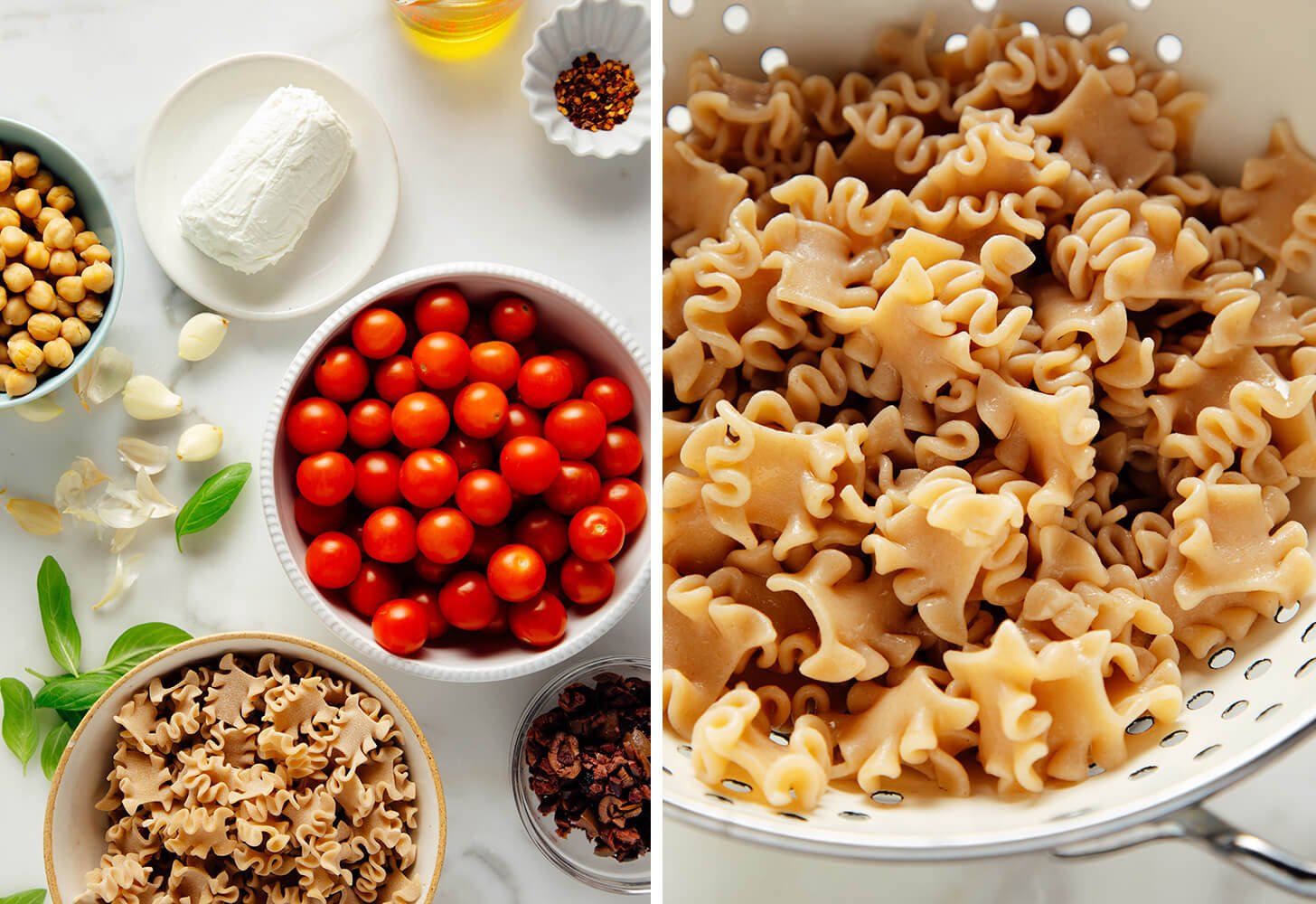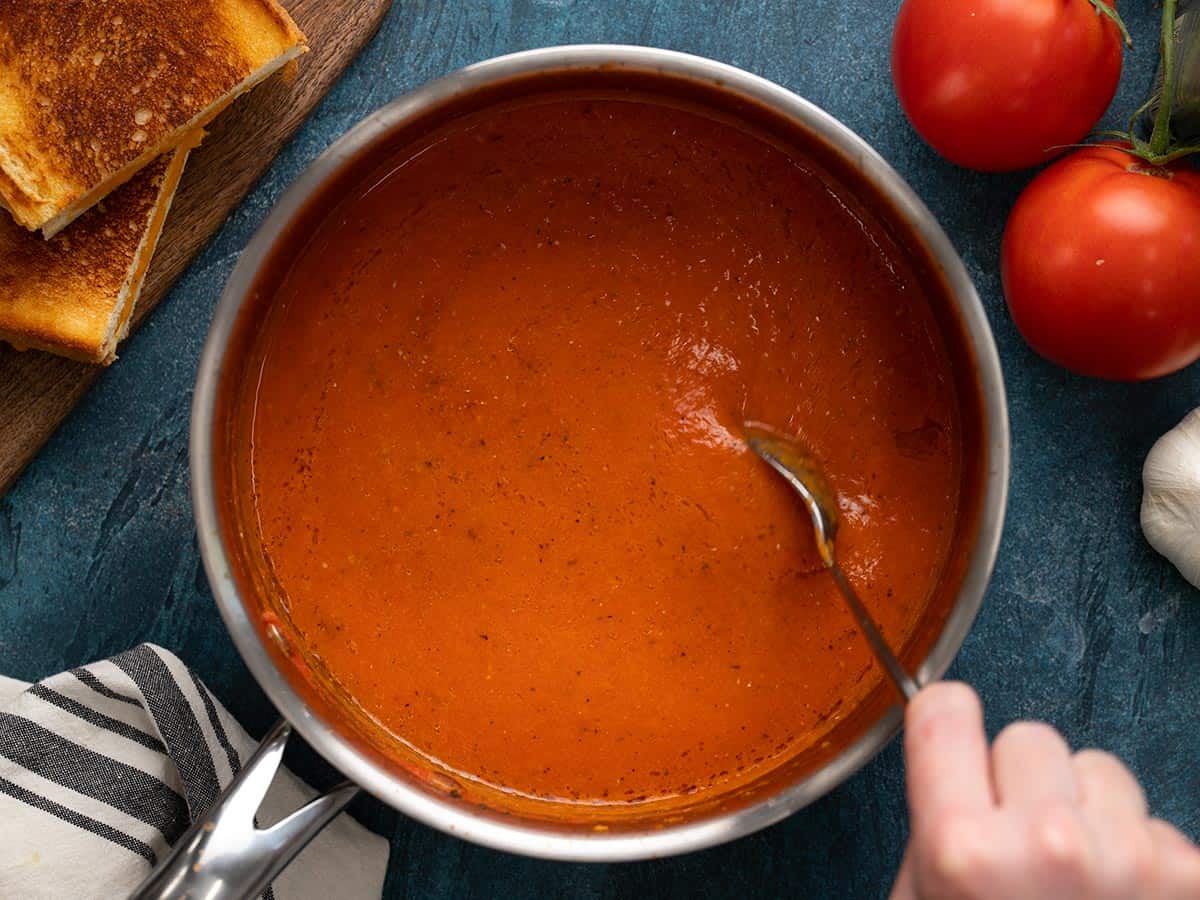I know it’s super easy just to open up a jar of store-bought marinara sauce and pour it over your pasta, and sometimes that’s all the energy we have (no shame), but hear me out. This easy marinara sauce recipe is surprisingly simple, super inexpensive, and you get to control the ingredients (great for those watching their sugar or sodium intake). Plus, homemade marinara sauce is very freezer-friendly, so you can make a double batch now and save the other half for the nights when you have no energy. It heats through in minutes and you’re good to go with zero effort!
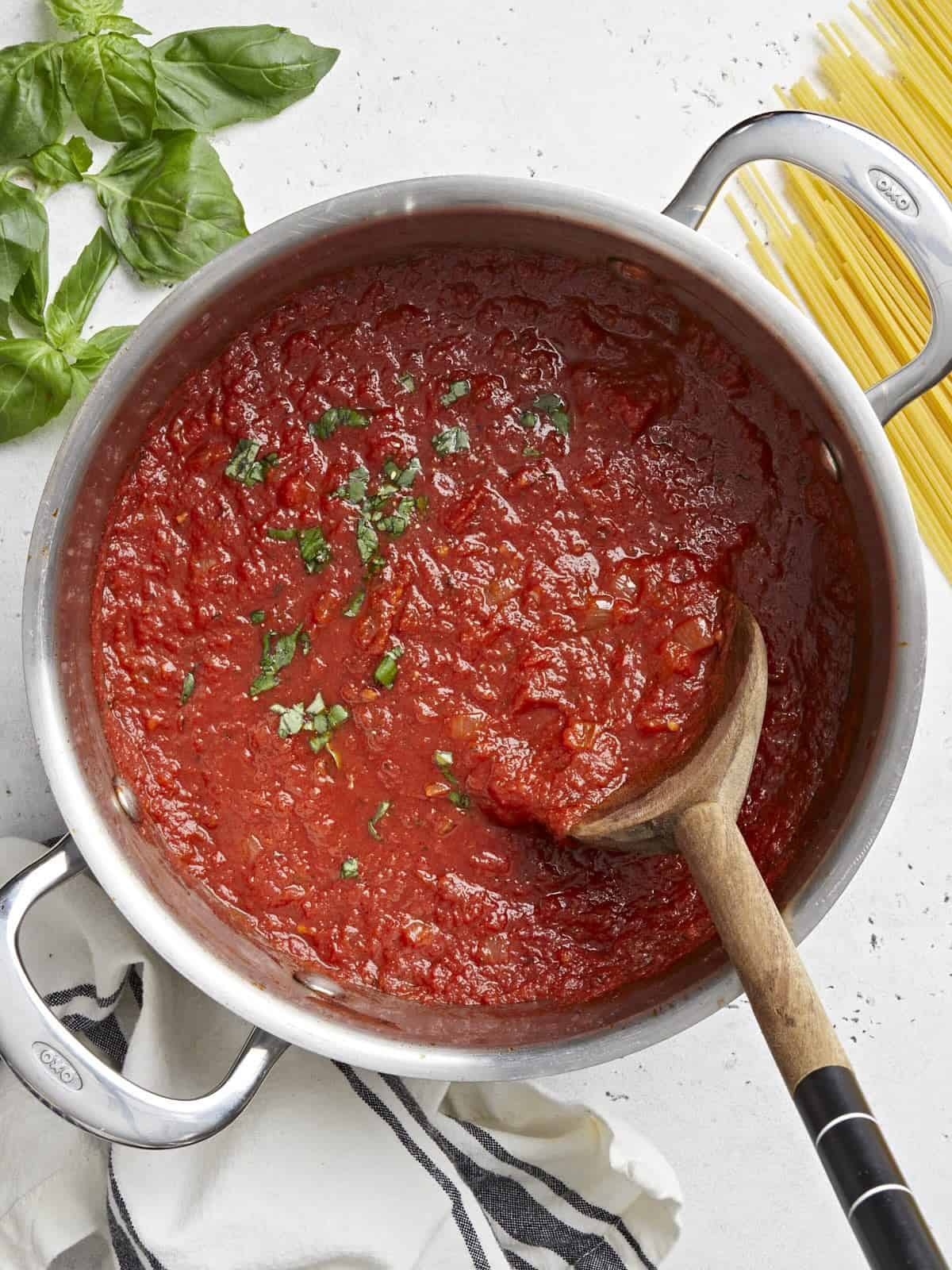
What is Marinara Sauce?
Marinara sauce is a simple tomato-based pasta sauce. It’s characterized by its simple list of ingredients, which leads to an uncomplicated and bright tomato flavor. The texture of marinara sauce is usually very uniform without large chunks, which allows it to coat pasta evenly. Marinara sauce is most often used as a sauce for pasta, but it can also be used in many other dishes or as a dipping sauce.
Ingredients for Marinara Sauce
Marinara sauce in its most simple form is just puréed tomatoes (or passata) and a small amount of herbs and spices. I’ve added a couple more ingredients here to satisfy my American palate, but the recipe remains very simple. Here’s what you’ll need to make this marinara sauce recipe:
- Onion: The natural sugars in onion add a touch of sweetness to the sauce, which helps balance the acidity of the tomatoes.
- Garlic: Garlic pairs so well with tomato sauce that I just had to add some to round out the savory flavors. That being said, you can skip it for a more traditional marinara sauce flavor.
- Olive Oil: Olive oil helps the onion sauté without burning and it adds some body to the sauce.
- Crush Tomatoes: A large can of crushed tomatoes provides bulk to this sauce with a fairly smooth texture. If you can not get crushed tomatoes where you live, passata will also work.
- Tomato Paste: A little bit of tomato paste added to the sauce helps thicken it up and intensifies the tomato flavor.
- Herbs: Dried basil and oregano round out the flavor of this sauce and give it a subtle herbal finish.
- Brown Sugar: Adding sugar is a short cut with tomato sauce that helps balance the acidity without having to simmer the sauce for a long period of time. You can skip the brown sugar, but I love the balance it brings to the flavor.
- Salt: Salt is arguably the most important ingredient in any dish as it helps our tongue distinguish between different flavors. If your sauce is not properly salted, you will not be able to taste its full flavor.
What Kind of Tomatoes to Use for Marinara Sauce
This recipe is written using canned crushed tomatoes, which offer both convenience and a low price. While you most definitely can make marinara sauce using fresh tomatoes, that would require several more steps and a reformulation of the recipe to account for the extra water and flavor differences.
When choosing the canned crushed tomatoes for this recipe, keep in mind that there can be quite a drastic flavor difference between brands. If budget is your main concern, this recipe makes a great sauce even when using generic-brand canned tomatoes. But, if you want to get a bit fancier, you can opt for a premium or imported brand, or even buy whole canned San Marzano tomatoes and purée them yourself. Even when you opt for a more expensive canned tomato, this recipe is still very easy and budget-friendly, making it a great option for special occasions like date night in!
How to Use Marinara Sauce
We all know that marinara sauce is great on pasta, but you can use it for other recipes, as well! Here are some other ways to use this easy homemade marinara sauce:
- Use it on pizza for a lighter tomato flavor. It’s particularly great on Margherita pizzas.
- Use it as a dipping sauce for homemade focaccia or breadsticks.
- Combine it with other sauces like pesto or alfredo sauce to make a new pasta or dipping sauce.
- Add it to sandwiches, like Meatball Subs.
- Use it as a base for soup by adding more seasoning, broth, and other items like pasta, meatballs, or vegetables.
How to Store And Reheat
As mentioned, this marinara sauce recipe freezes beautifully. After cooking the marinara sauce, transfer it to the refrigerator until completely chilled. The sauce will stay good in the refrigerator for 4-5 days, or you can transfer it to the freezer for longer storage. Just make sure the sauce is in a freezer-safe container, label and date it, and then freeze for up to three months. To reheat, simply transfer the frozen sauce to a saucepot and heat over medium-low, stirring often, until heated through.


Easy Marinara Sauce
Ingredients
- 1 small yellow onion $0.37
- 2 cloves garlic $0.16
- 2 Tbsp olive oil $0.32
- 2 Tbsp tomato paste $0.20
- 1 28oz. can crushed tomatoes $1.89
- 1/2 tsp dried basil $0.05
- 1/2 tsp dried oregano $0.05
- 1 tsp brown sugar (optional) $0.02
- 1 tsp salt (or to taste) $0.05
Instructions
- Dice the onion and mince the garlic. Add the onion, garlic, and olive oil to a sauce pot and sauté over medium heat until the onions are soft and translucent (about 5 minutes).
- Add the tomato paste and continue to stir and cook for 3-5 minutes more, or until the tomato paste takes on a slightly darker color. This caramelizes the sugars in the tomato paste to give it a slightly sweeter and less acidic flavor.
- Add the crushed tomatoes, basil, oregano, brown sugar, and salt to the pot. Stir to combine and dissolve any tomato paste from the bottom of the pot.
- Allow the sauce to come to a gentle simmer, then reduce the heat to medium-low, partially cover the pot, and allow the sauce to simmer for about 30 minutes, stirring occasionally.
- After simmering for 30 minutes, taste the sauce and adjust the salt, sugar, or other seasonings to your liking. If the sauce is too acidic for your liking, you can let it simmer longer (about one hour) or add more sugar. Serve hot or refrigerate until ready to eat.
See how we calculate recipe costs here.
Nutrition
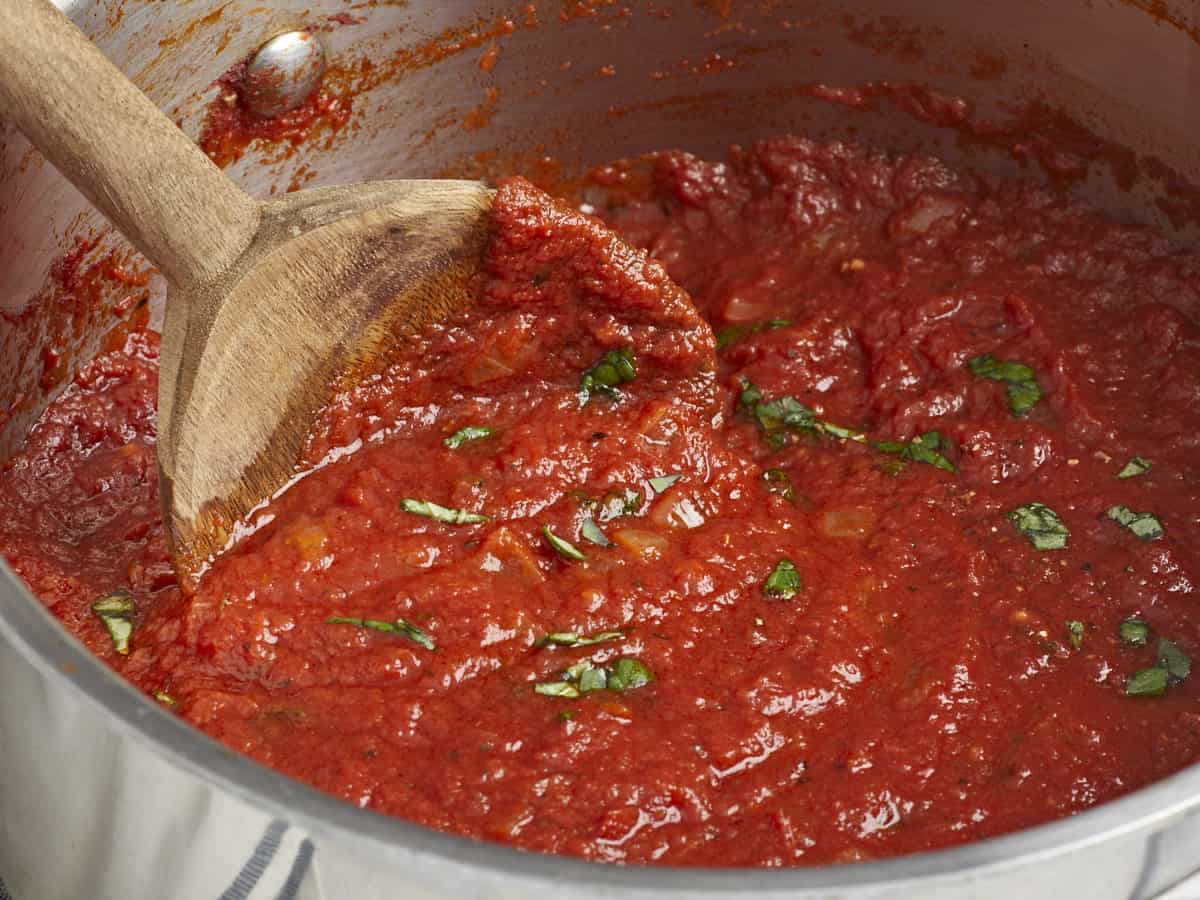
How to Make Marinara Sauce – Step by Step Photos

Dice one yellow onion and mince two cloves of garlic. Add the onion, garlic, and 2 Tbsp olive oil to a sauce pot and sauté over medium heat until the onions are soft and translucent (about 5 minutes).

Add 2 Tbsp of tomato paste to the pot and continue to stir and cook for 3-5 minutes more, or until the tomato paste takes on a slightly darker color. This caramelizes the sugars in the tomato paste, adding a natural sweetness.

Finally, add one 28oz. can of crushed tomatoes, ½ tsp dried basil, ½ tsp dried oregano, 1 tsp brown sugar, and 1 tsp salt. Stir to combine and dissolve any tomato paste from the bottom of the pot. Allow the sauce to come to a gentle simmer.

Once simmering, turn the heat down to medium-low, partially cover the pot, and let the sauce simmer for about 30 minutes, stirring occasionally. Leaving a lid on the pot but slightly ajar can help prevent splatter.

After simmering for 30 minutes, give the marinara sauce a taste and adjust the salt or other herbs to your liking. If it’s still too acidic for your taste, you can either simmer it longer (around 1 hour total), or add more sugar.

Serve the homemade marinara sauce over pasta, use it for a dipping sauce, or freeze it for later!
More Pasta Sauce Recipes
The post Easy Marinara Sauce appeared first on Budget Bytes.



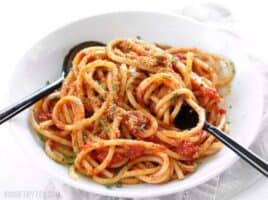


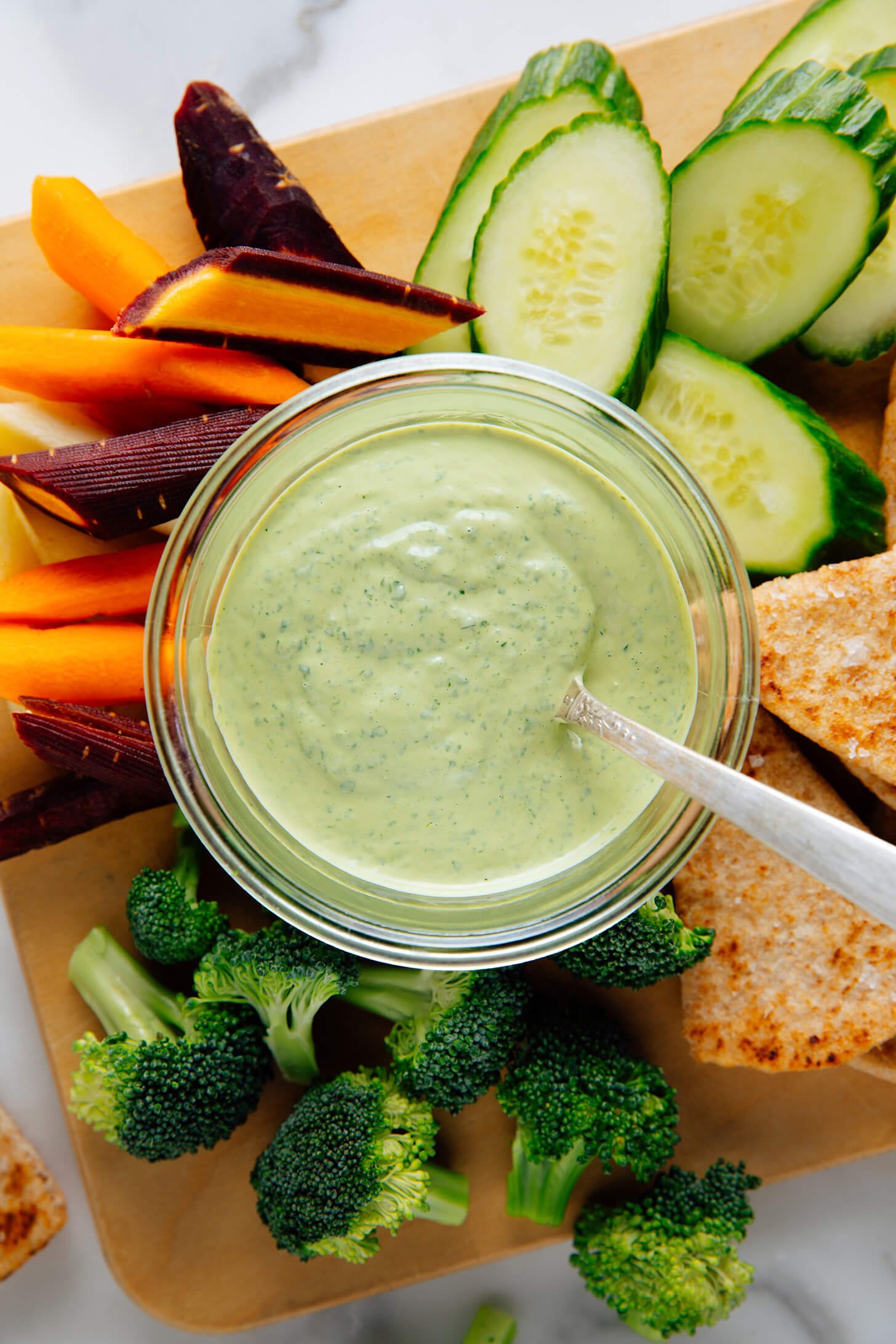



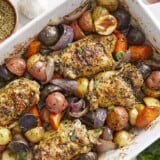
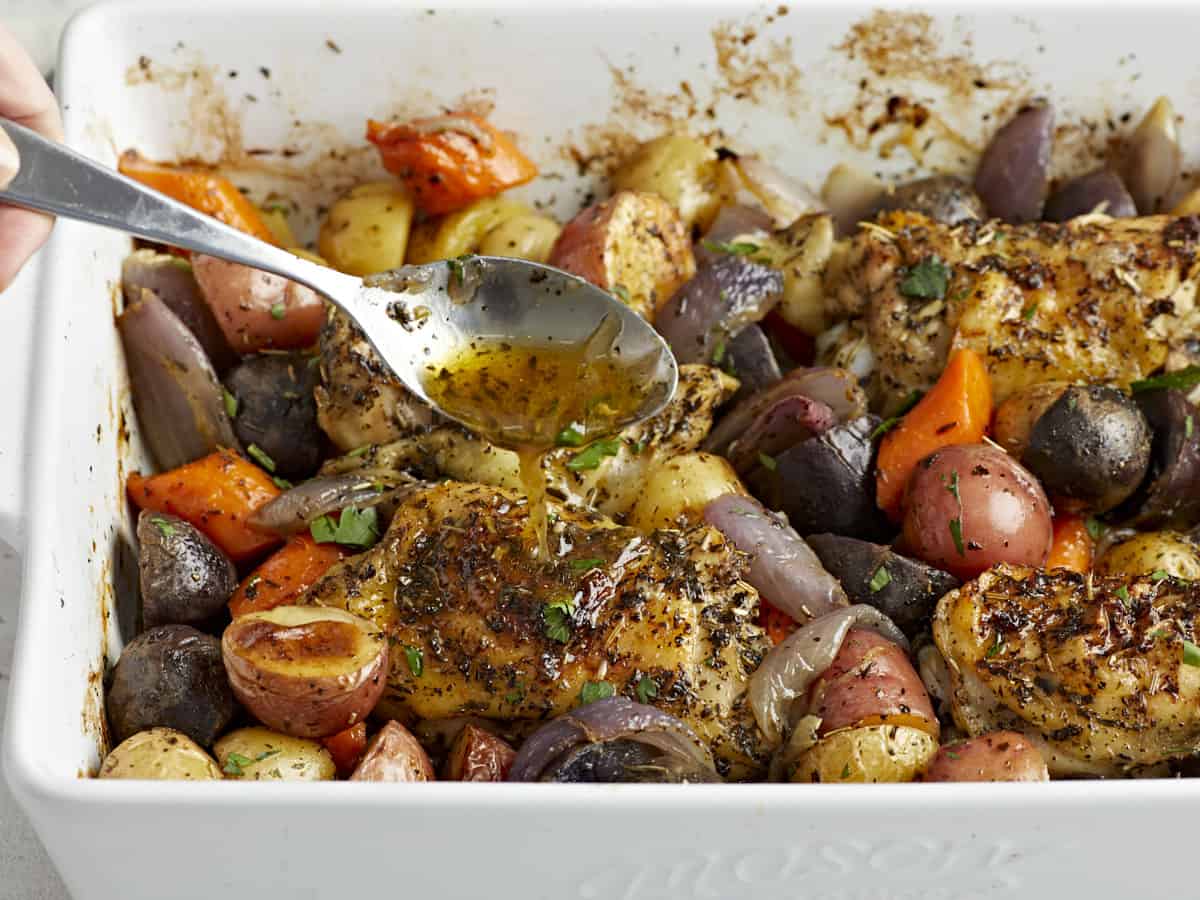




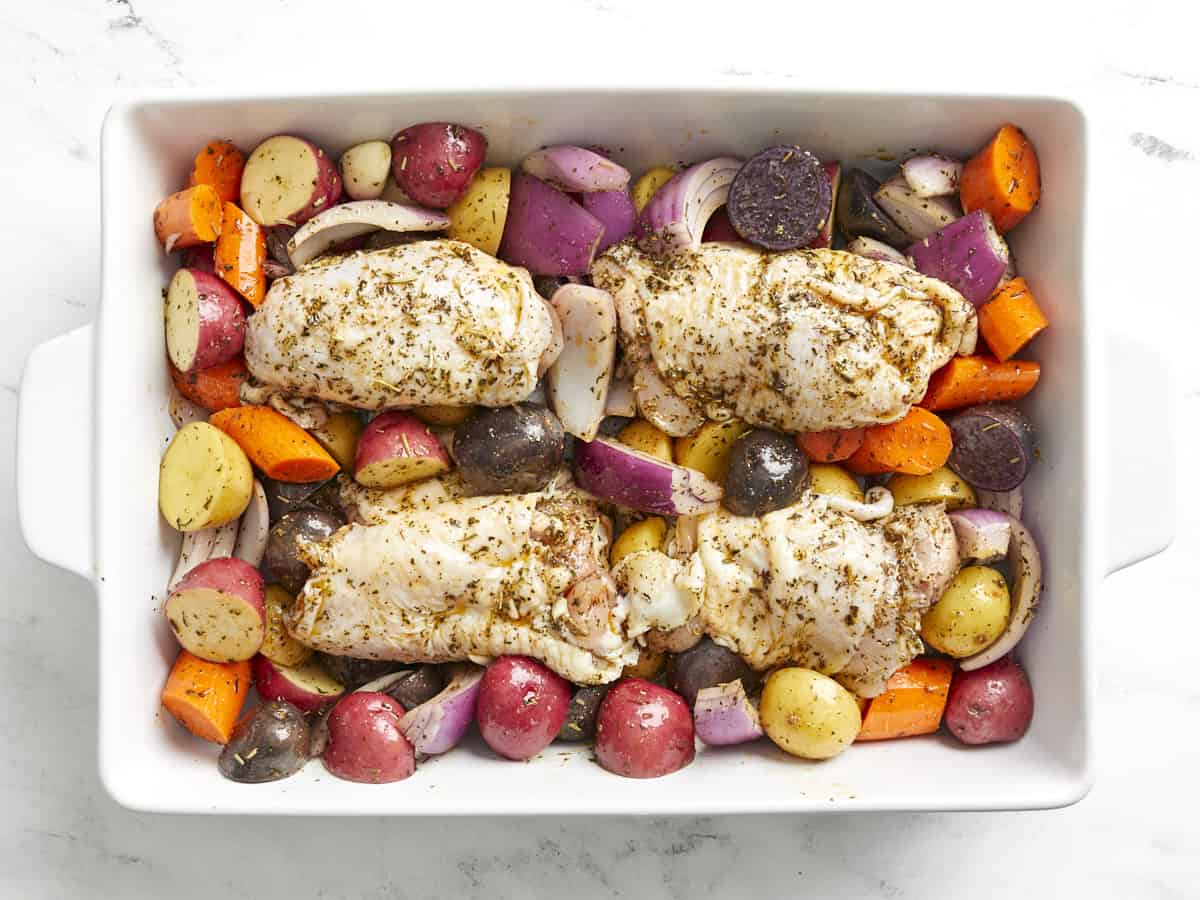






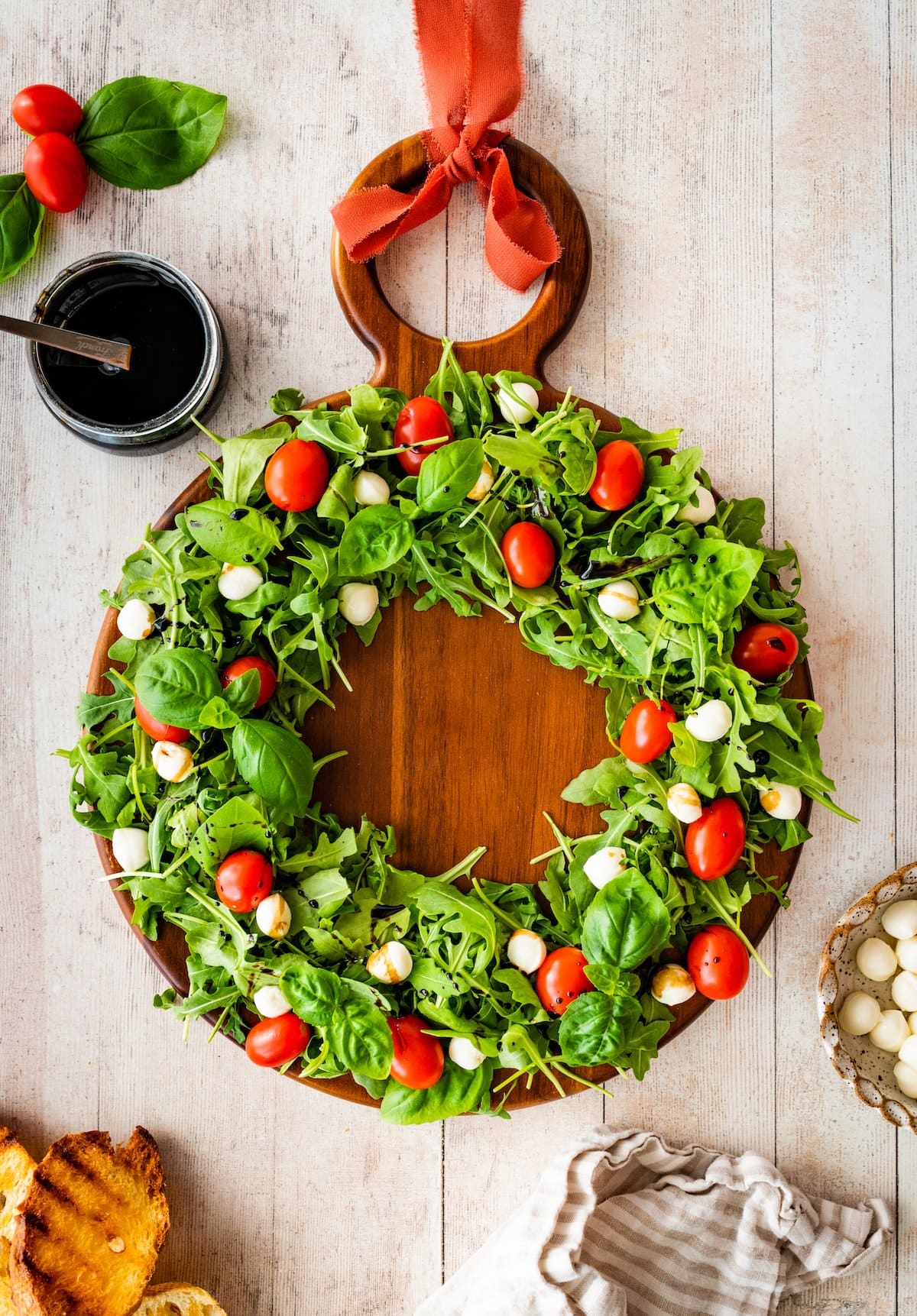 If you are looking for an EASY holiday recipe, you have to try this Caprese Salad Wreath. You only need 5 ingredients and 10 minutes to make this Christmas salad. On a large platter or board, use arugula to make a wreath shape and decorate with tomatoes, fresh mozzarella peals, and basil. Drizzle with balsamic…
If you are looking for an EASY holiday recipe, you have to try this Caprese Salad Wreath. You only need 5 ingredients and 10 minutes to make this Christmas salad. On a large platter or board, use arugula to make a wreath shape and decorate with tomatoes, fresh mozzarella peals, and basil. Drizzle with balsamic… 
